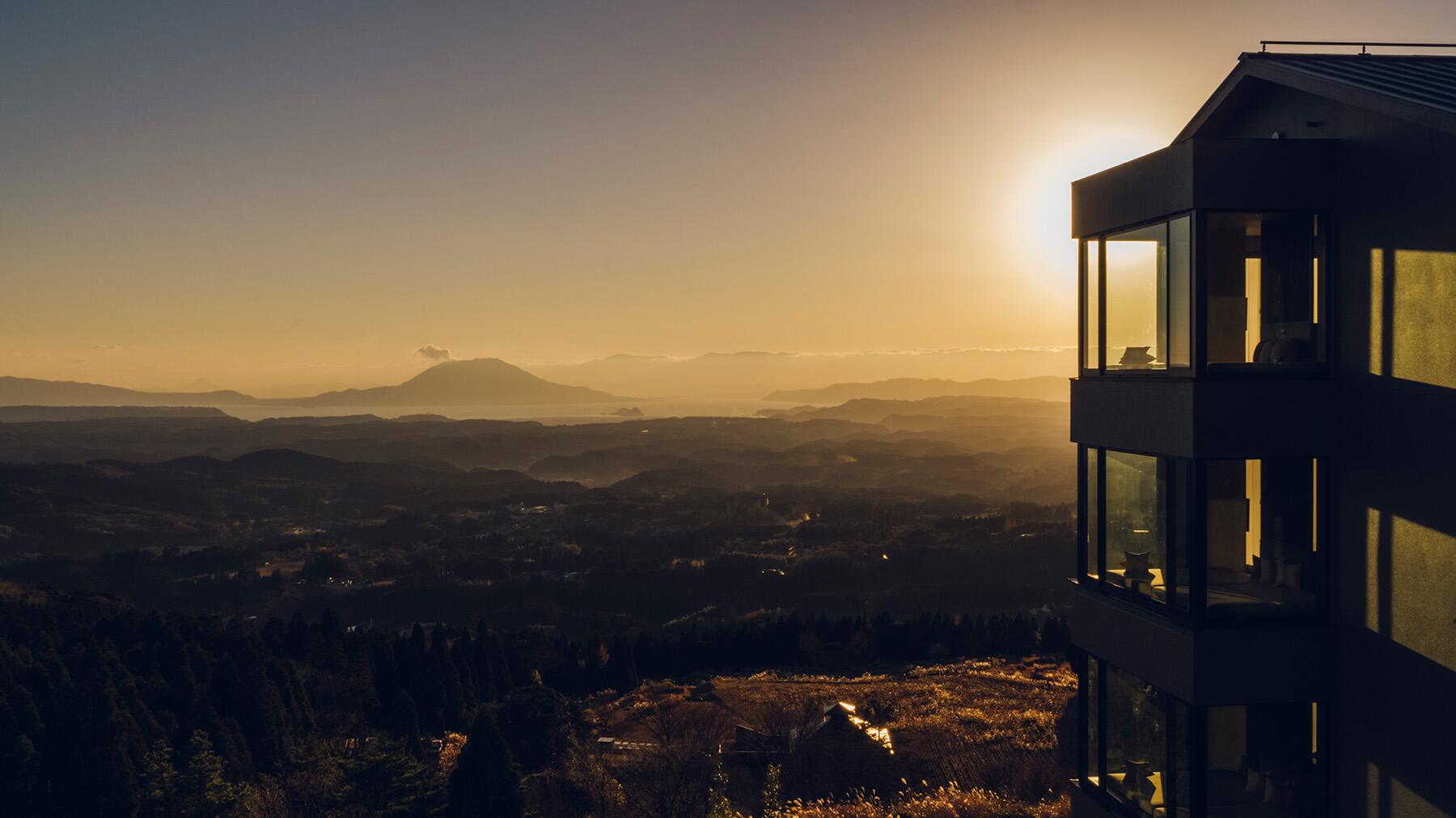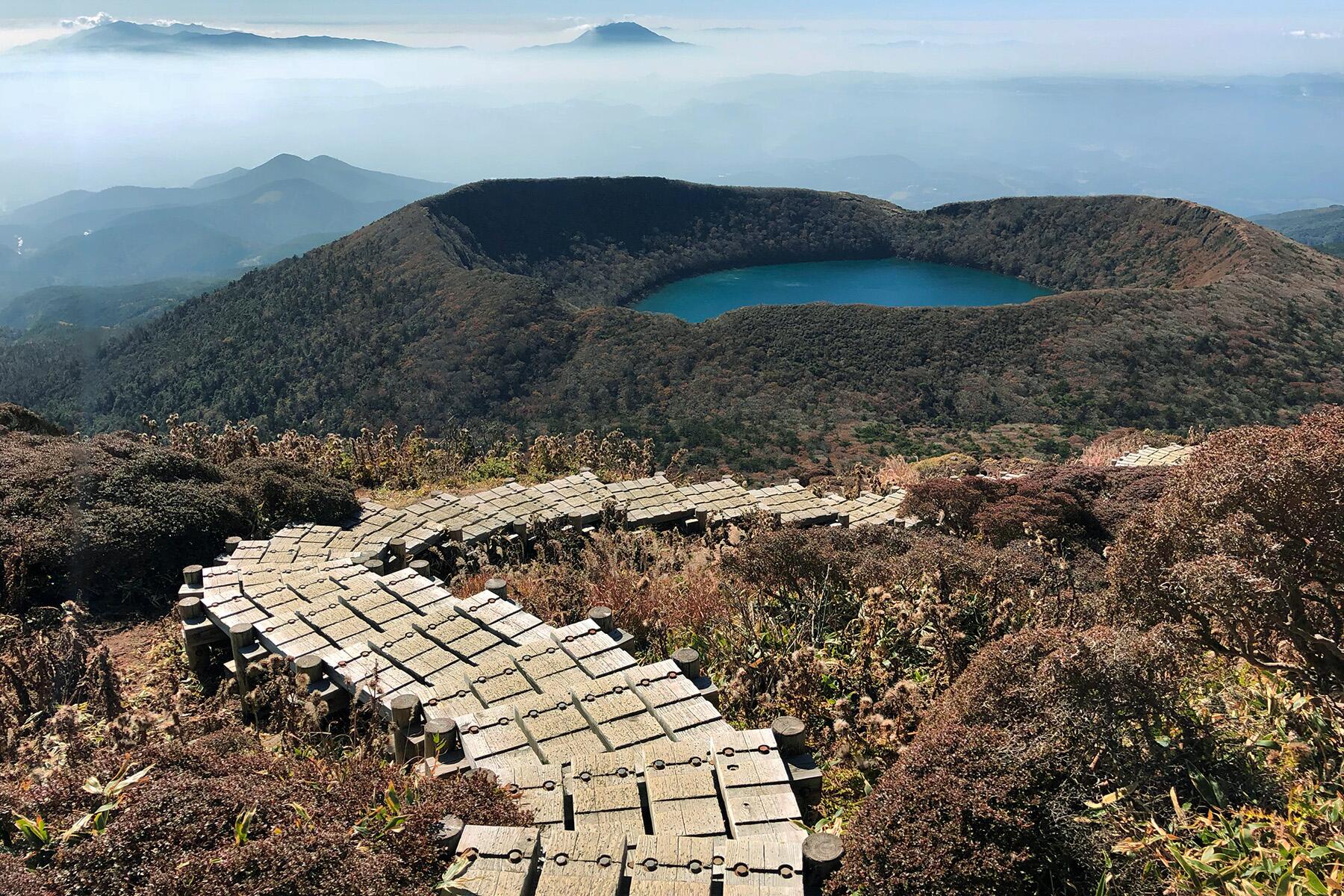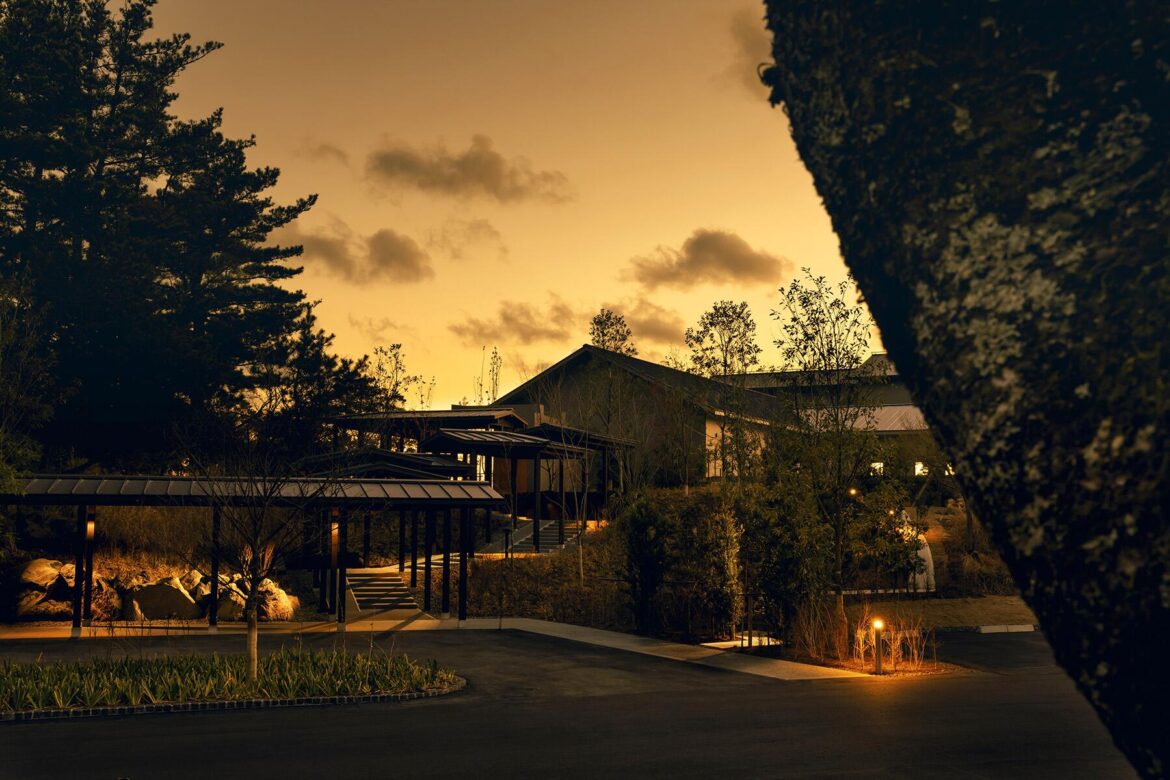What have I done?
The snowflakes drifted uncaringly down around me as I contemplated the choices I’d made in my life that led me to be standing here in rural Japan…in the snow…in 30-degree temps…completely naked.
The soles of my feet were so numb that I could barely feel the freezing stone beneath them, and my nose and ears were starting to feel hot. I tried to think back to my Boy Scout training. Isn’t a burning sensation the first symptom of frostbite? Or was it numbness?
In front of me was a steaming pool and an impossible choice: stand here in the freezing cold air or get into the scalding hot water. It was like some kind of sadistic scene out of Shogun.
Ok. Wait. Let’s back up.
I was in Japan for my annual trip to visit my in-laws in Kagoshima Prefecture. Kagoshima is the southernmost prefecture of Kyushu, the southernmost of Japan’s four main islands. Head straight south in a boat from Kagoshima, and you hit nothing for 2,200 miles until Indonesia. Head east, and it’s 6,200 miles before running aground in Mexico. In other words, it’s pretty much the edge of the world. Despite this, or maybe because of it, I enjoy my time there immensely. I’ve been encouraging all of my friends and family to get out of the cities and explore the rest of the country ever since I lived in a small town of 7,000 people in Oita Prefecture (also on Kyushu) when I was in my early 20s. Sure, you won’t find much “kawaii” cosplay or cream puffs shaped like Totoro in the rural cities and towns around Japan–but you will find an abundance of amazingly fresh food, clean air, beautiful vistas, warm hospitality, and a surprising amount to do.
Continue Reading Article After Our Video
Recommended Fodor’s Video
One of my favorite things to do once I get out of the cities is to visit an onsen hot spring resort. Onsen are the product of Japan’s abundant volcanic activity and have been an integral part of Japanese culture for thousands of years. Unlike visiting hot springs in places like Iceland, onsen bathing is more than just floating in a pool of hot water. There’s a ritual to it that is as much a part of the experience as the actual bathing itself.
 The Hoshino Resorts KAI Kirishima.Hoshino Resorts KAI Kirishima
The Hoshino Resorts KAI Kirishima.Hoshino Resorts KAI Kirishima
First of all, onsen bathing is always done in the nude—most places won’t allow you to wear a swimsuit, even if you wanted to. The baths are (almost) always gender-separated, but it still often weirds people out a bit to bathe in the nude in front of other people. (When I was in Japan for the first time as a teenager, you definitely couldn’t have paid me enough to try it, but over the years, I’ve grown accustomed to it.)
Second of all, you have to wash yourself before you get in the bath. Taking a bath before taking a bath might seem odd, but when you’re sitting there soaking in the same bath water as 20 strangers, you’ll be glad to know that all of them cleaned themselves before stepping in. So, you wash yourself while sitting on a low stool at the wash stations spread around the perimeter of the room, and once you’ve scrubbed off the dirt and sweat of the day, you’re ready to start soaking. There’s something comforting about the fact that everyone visiting the bath follows the same ritual. It doesn’t matter if you’re the president of a multibillion-dollar company or a garbage collector–all are equal in the onsen.
I’d arranged for a couple of nights at a local hot spring resort owned by the Hoshino Resorts brand, the KAI Kirishima, as a relaxing staycation. KAI Kirishima sits on the slopes of Mt. Kirishima, an active volcano that straddles Kagoshima and Miyazaki prefectures, and looks out over one of the three oldest national parks in Japan, Kirishima-Kinkowan National Park. The setting is unbelievably beautiful, with forested hills, lush fields full of deer, and another volcano, called Sakurajima, in the distance. It’s idyllic, and the designers of the hotel use it to their full advantage. All of the rooms face a single direction–out over the national park and towards Sakurajima—and the lobby is designed in such a way that you cannot see this stunning vista at all when moving from the hotel entrance, through the check-in desk, lobby, and elevators, until you’re finally rewarded with it when you get to your room. It’s a clever design trick that makes the rooms feel extra special.
 The Hoshino Resorts KAI Kirishima.Hoshino Resorts KAI Kirishima
The Hoshino Resorts KAI Kirishima.Hoshino Resorts KAI Kirishima
The exceptionality of KAI Kirishima doesn’t stop with the design, though. They have perfected the art of omotenashi, or the full-spectrum hospitality that Japan is rightly famous for. The staff never hover or intrude, but somehow are always around right when you need something (how do they do that??), all smiles and gentle bowing and quick to offer anything you might need or to drop off that small box of seasonal sweets, a perfect accompaniment to the in-room tea set. As is extremely common in Japan, nothing is done in a lackluster or half-assed way, and everyone takes great pride in doing their jobs perfectly, whether that job is arranging sweets on a plate, mopping the floor, or explaining the rules of the onsen. This is true all over Japan, but especially in the countryside, where tourists are less common and, therefore, more special.
Speaking of the countryside: the rural parts of Japan are some of the most beautiful in the world—a quilt of tea fields, bamboo groves, and little towns that seem stuck in a (very scenic) time warp. There are hiking trails and walking paths everywhere, with scenic pit stops and gorgeous vistas awaiting you at every turn on clear days. Myriad flowers bloom in spring, cicadas serenade your every step in summer, fall foliage that rivals anything in New England awaits in fall, and snowy tranquility in winter–each season has something special to offer.
Kirishima Kinkowan National Park itself is a wonderland for amateur volcanologists, hardcore hikers, and anyone with a camera they want to justify lugging up a mountain. (I’ll stick to my cell phone, thank you very much.) Trails snake through ancient forests, up to crater lakes with names that sound like they were invented by Studio Ghibli, and past lonely shrines half-swallowed by moss. If you listen closely and imagine hard enough, you can picture feudal lords and ascetic monks from centuries past walking along these very trails.
 Mt. Kirishima, Kagoshima, Japan.Shutterstock/Joan Ne
Mt. Kirishima, Kagoshima, Japan.Shutterstock/Joan Ne
Yet for all its wildness, the countryside here is deeply welcoming. Random roadside produce stands operate on the honor system (“Cucumbers only 50 yen! Please don’t steal!”), tea farmers will wave you into their fields to sample this year’s brew, and neighborhood festivals seem to happen almost anytime. Kids chase fireflies in the summer, grandmas hand out homemade pickles to their neighbors, and every shopkeeper seems genuinely delighted just to have you stop in.
We’re not all nature people, though. Some of us just want to sample the local spirits: the kind from a bottle, not from the afterlife. If that’s more your speed, allow me to introduce you to shochu. If sake is Japan’s best-known tipple, shochu is its quietly proud cousin—especially down in Kagoshima, where it’s made from sweet potatoes, not rice or barley. Forget what you think you know about spirits: Kagoshima’s sweet potato shochu isn’t harsh or fiery. It’s complex, aromatic, and has just enough earthy umami to make you wonder if your taste buds need to pay rent.
A pilgrimage to the source is pretty much mandatory (and my in-laws would never forgive me if I didn’t shill for the local stuff), so the hotel kindly booked me a private tour at Kokubu Shuzo, a local shochu distillery about 45 minutes from the hotel.
This isn’t Napa; the “tour” involves donning a hair net, walking through fragrant fermentation rooms, and marveling as piles of sweet potatoes (called satsuma-imo in Japanese) are transformed by science and tradition into the clear, pungent liquid. The staff are as serious about the process as any Napa vintner, however, and are eager to share the finer points with anyone who shows an interest, though usually in a local Kagoshima dialect that befuddles most Japanese from other parts of the country.
I’ve always been a shochu fan, but the variety of offerings at this single, small distillery is stunning: from “as soft as a lullaby” to “OMG what on Earth is that?”
INSIDER TIPIf you have the chance to visit a small boutique distillery, don’t be surprised if they slip you some of their “not for public sale” reserve at the end. After all, it’s a small distillery, and this is rural Japan. If you act interested, you’re practically family. If you leave without a bottle tucked under your arm and a newfound appreciation for the lowly sweet potato, you did it wrong.
What sticks with me most—the thing I try hardest to get friends and family to understand—isn’t the baths, the endless feasting, or the gently buzzed afternoon tasting sweet potato spirits. It’s inaka, the countryside itself, and the low-key magic that comes from slowing down in a place where time seems to bend, stretch, and invite you to lose your schedule entirely. You start each day not with a checklist, but a question: What do I feel like doing? Maybe today it’s a wander through the impressive Kirishima-jingu shrine, with its moss-cloaked lanterns and centuries-old trees. Maybe it’s a ramble along the Kirishima Open-Air Museum’s sculpture-dotted grounds, where you can contemplate the art or just the beautiful futility of trying to find a cell phone signal. Or maybe you want to do absolutely nothing, in which case—with the sun on your face, a yukata bathrobe hanging off your shoulders, and the faint aroma of yuzu lingering from your last soak—congratulations, you’re absolutely nailing leisure in Japan’s inaka.
Speaking of one last soak, that Shogun-like scene I mentioned at the top? That was me about to enter the rotemburo outdoor bath.
I exit the bathhouse naked as the day I was born and walk in the frigid mountain air to the bath. The stone beneath my feet is freezing, literally, and goose bumps cover me from head to toe. And finally, I stop hesitating, and I dip in.
The bath itself is far from a punishment. It’s the reward for my frozen 20-step journey. There’s a magic moment that happens while sliding down into piping-hot mineral water: frozen appendages start to tingle, stress floats away (quite literally—Japanese research claims these minerals actually lower cortisol!), and I become the sort of blissed-out individual who suddenly finds it totally reasonable to strike up a conversation with a stranger while we both are in the buff.
With the swirling mists, ancient pines, and the occasional startled deer wandering by, I get the distinct sensation that this is the way humans are supposed to unwind—no cellphones, no gimmicks, just the sounds of the wind, a chorus of frogs, and the knowledge that life doesn’t get any better.


AloJapan.com